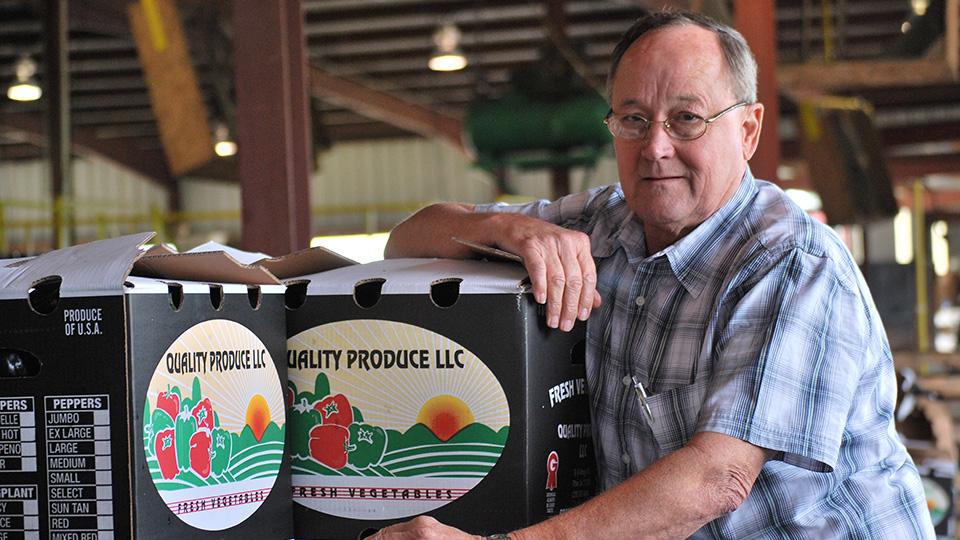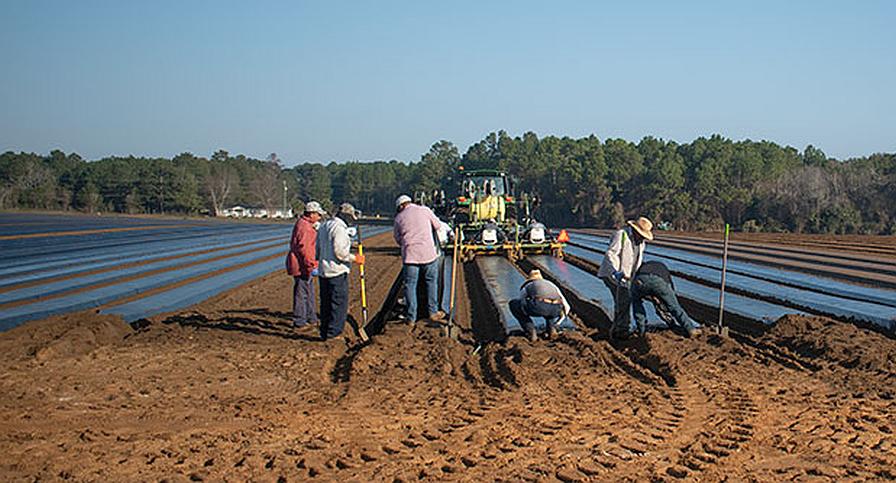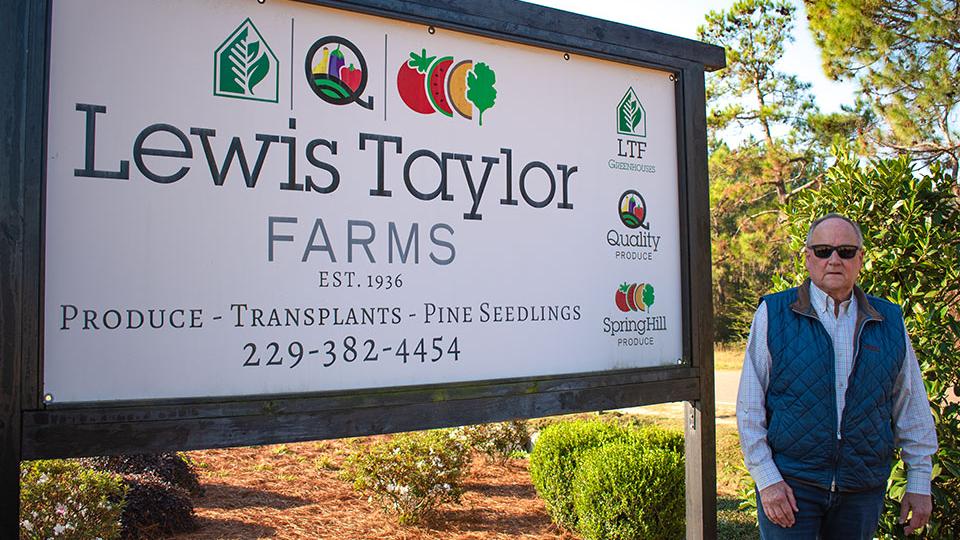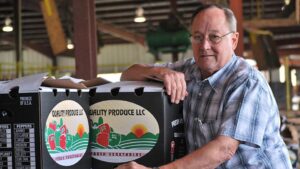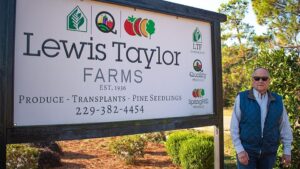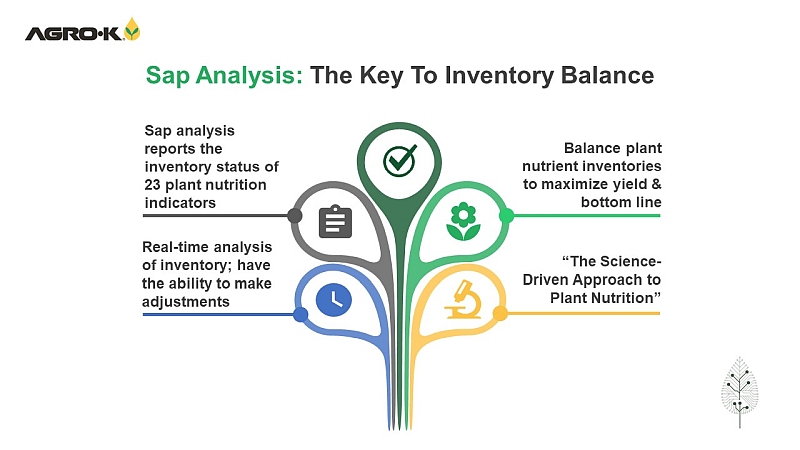Vegetable Grower Works Hard To Help His Industry Overcome Labor Issues
On a sunny November day in Ty Ty, GA, more than 500 workers were going about the business of packing vegetables and preparing for the next crops while Bill Brim was in his office working the phones. Regulatory action again threatens the economic survival of produce farmers across the Southeast.
Brim was desperately thinking through what steps to take to help Lewis Taylor Farms and all of his friends and competitors survive the latest blow: a 14.1% hike in wages for H-2A workers. Lewis Taylor supports between 450 and 700 H-2A workers, depending on the time of year. The wage increase alone stands to cost Lewis Taylor about $2.5 million in 2023. Brim says growers need help from national leaders to change the Adverse Effective Wage Rate (AEWR). As of this posting, the new rate was scheduled to go into effect on Dec. 29.
Their profit margin isn’t wide enough to support wages at that level.
“We didn’t make any money last year when H-2A wages were $11.99. At $13.67 an hour for H-2A workers, we’re going to lose money,” Brim says. “Over the years, we have tried to make it work, but this is going to put a lot of people out of business.”
With 35 years in a family business that started operation more than 80 years ago, Brim and partner Ed Walker have weathered many blows. A salmonella outbreak in 2008 focused on tomatoes right at peak season for Southeast growers.
By the time USDA figured out jalapeños from Mexico were the culprit, Lewis Taylor lost $1.2 million. Brim eventually spoke before Congress to address the impact on farmers when federal agencies act precipitously.
That was only one crisis — albeit well-publicized. Nearly every year, however, some regulation, weather event, or agronomic anomaly strikes a blow against farmers. One year it’s food safety regulations that increase costs by 25 cents a box. Another year, a hurricane comes through, tossing crops around a field and ripping into greenhouses.
With 81 greenhouses and 6,500 producing acres each year, Lewis Taylor is better prepared to get back up after those blows. Smaller operations struggle harder. Brim fears this wage hike — on top of a $1-per-hour wage hike last year — will be a mortal strike for many.
“The produce industry in South Carolina, Georgia, and Florida is in a real desperate situation,” Brim says.
Labor Realities
The hourly wage for H-2A workers, formally known as the AEWR, and set by USDA, is in addition to other requirements employers must meet when contracting foreign workers. Agricultural companies who employ H-2A works must also provide housing, transportation to and from the employee’s home country, and various community support services. At the new wage, Brim estimates Lewis Taylor is paying about $16 an hour per employee.
Lewis Taylor started contracting H-2A workers in 1997. They simply couldn’t staff the farm by hiring locally. That said, in addition to the 455 H-2A workers on-farm from September to July, Lewis Taylor also hires another 50 local workers year-round and augments its H-2A employees with another 250 or so workers for peak harvest.
“We can’t get another labor unless we use H-2A,” Brim says.
Most of the H-2A workers who contract with Lewis Taylor return year after year.
“Our workers are happy. They’re making more money than they can at home. Wages in Mexico are $12 per day!” Brim says. “At $11.99 per hour, they were making more money than they ever had in their life.”
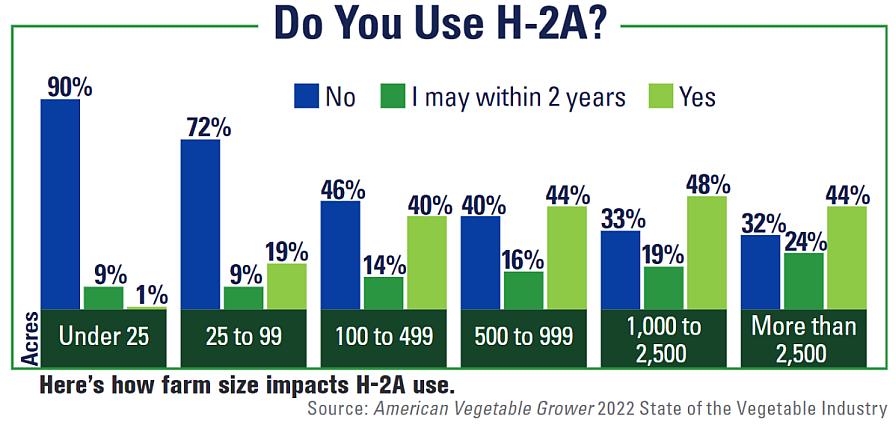
The wage hike Lewis Taylor is struggling under is expressed in varying levels across the country. The $13.67 per hour rate impacts South Carolina, Alabama, and Georgia. Geographical zones across the country are seeing similar increases. The per-hour wage, by regulation, is supposed to be established based on wage surveys by the National Agricultural Statistics Service. In early December, those survey reports had not been made publicly available.
The December wage hike is the most recent in a program known for continuous change and regulatory updates.
“With H-2A, you’re never done,” Brim says.
Proactive Advocacy
Brim’s focus on the phones that November morning is a familiar activity. Brim advocates for reasonable regulation with local and federal government leadership, stays active in agricultural organizations, and regularly appears before Congress and various federal committees.
“We’ve been to Washington and back so many times,” Brim says.
As a way forward, Brim says — as he has so many times — all producers must add their influence to support reasonable regulation for agriculture.
“There’s only so many of us,” Brim says. “To get anything done, we need everybody.”
What everybody needs to do, Brim says, is:
- Create relationships with local and federal elected officials. Stay in touch year ’round so they know who’s calling when the phone rings during an agricultural crisis.
- Be active in the Farm Bureau.
- Advocate through any other organizations that support farm issues.

American Vegetable Grower’s GROW STRONGER initiative brings you positive stories from progressive growers like Bill Brim filled with innovative solutions to help you grow a stronger future.
The top issues for produce operations today, Brim says, are the same as for row crop farmers: “Regulation, labor, and increased prices for supplies and inputs.”
Some of those are things farmers can do little to change. Regulatory activity is one farmers can impact.
“We have to do all we can,” Brim says. His call to advocacy is for his business, for farms across the country, and ultimately for an adequate food supply and national security.
“If all of these retailers are thinking they’ll just go to Mexico to get all the produce they need, they need to think again,” Brim says. “Mexico doesn’t have the water or the land to increase production.”
As for national security, supply issues experienced during the pandemic certainly made a case for maintaining a domestic food supply.
“If we don’t have our own food security, we are in a poor, poor state,” Brim says.
At a Glance: Lewis Taylor Farms
Owners: Bill Brim and Ed Walker
Founded: Ed and Bill bought it in 1985. It’s been family operated since the 1930s.
Location: Headquarters in Ty Ty, GA
Size: 6,500 acres of produce and 81 greenhouses
Crops: Most vegetable crops





